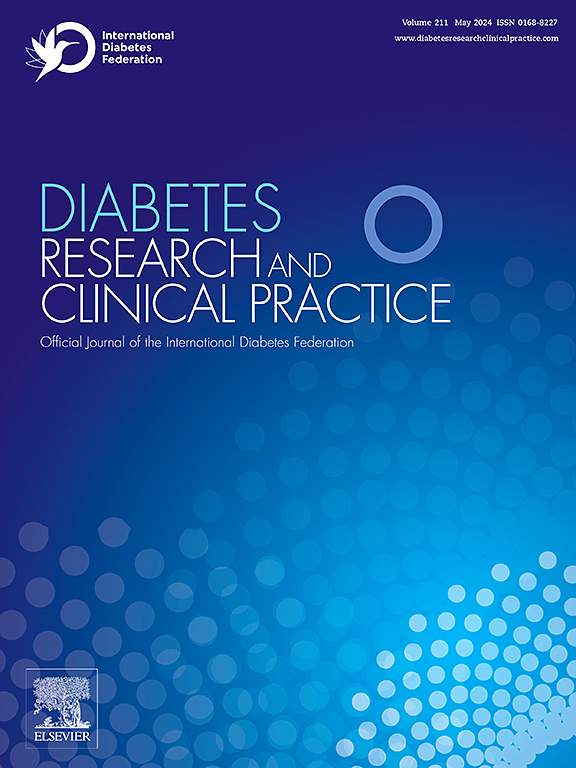Low uptake of screening for retinopathy during pregnancy with pre-existing diabetes: A population-based cohort study
IF 6.1
3区 医学
Q1 ENDOCRINOLOGY & METABOLISM
引用次数: 0
Abstract
Aims
To determine the frequency of eye screening during pregnancy for people with pre-existing diabetes, and to examine what factors were associated with screening.
Methods
Using linked real-world population-level data in Ontario, Canada, we identified all livebirths to people with pre-existing diabetes between April 2015 and March 2020, and determined the proportion who had an eye screening examination during pregnancy. The associations between screening uptake and a variety of sociodemographic, clinical and health service variables were examined.
Results
Of 6,708 pregnancies among people with pre-existing diabetes, 1,256 (18.7 %) had an eye screening examination within the first trimester and 3,045 (45.4 %) had eye screening at any time during pregnancy. The highest eye screening rates were seen among those with prior retinopathy treatment, with longer diabetes duration, and on the insulin pump program. People who received care from an endocrinologist in the first 180 days of pregnancy were far more likely to have an eye examination.
Conclusions
Uptake of eye screening in the first trimester among people with pre-existing diabetes was extremely low, despite the risk of worsening and sight-threatening retinopathy during pregnancy. Even by the end of pregnancy, fewer than one-half of patients had received eye screening.
求助全文
约1分钟内获得全文
求助全文
来源期刊

Diabetes research and clinical practice
医学-内分泌学与代谢
CiteScore
10.30
自引率
3.90%
发文量
862
审稿时长
32 days
期刊介绍:
Diabetes Research and Clinical Practice is an international journal for health-care providers and clinically oriented researchers that publishes high-quality original research articles and expert reviews in diabetes and related areas. The role of the journal is to provide a venue for dissemination of knowledge and discussion of topics related to diabetes clinical research and patient care. Topics of focus include translational science, genetics, immunology, nutrition, psychosocial research, epidemiology, prevention, socio-economic research, complications, new treatments, technologies and therapy.
 求助内容:
求助内容: 应助结果提醒方式:
应助结果提醒方式:


